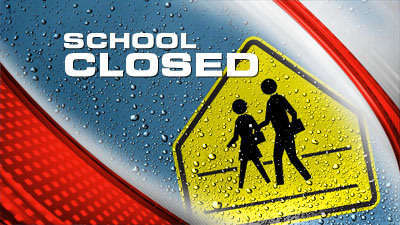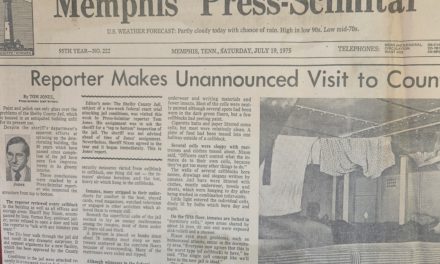In neighborhoods struggling to stay alive, there’s nothing more painful than cuts in public services and closing of public facilities.
In education, every dollar spent on inefficient and redundant facilities is a dollar that can’t be spent in the classroom.
It is the truth of these two realities that makes the potential of closing schools in Memphis so visceral, volatile, and combative. Even though most families in neighborhoods have no children in school, their presence is seen as a hub for community, an institution that’s the tenuous thread holding together neighborhoods.
The parents, however, are propelled by two of the most important things in their lives – their neighborhoods and their children. More than anything, however, in neighborhoods where residents feel beset by challenging trends, the instinct is simply to oppose anything that involves a change in the status quo (even if it’s not working for them).
Closure
The city school board has waded into this thicket with proposals to close anywhere from six to 21 schools as it takes responsibility for the new countywide district. The board’s focus, as it should be, is on teaching and learning, and that’s why it has asked City of Memphis government to work with it to consider alternative uses for as many as 21 schools to be closed. It’s a tall order of course, because these are sizable buildings and there just aren’t enough neighborhood-based, alternative uses that make its overhead costs make sense.
It’s hard to argue with the school board’s attention to developing a system that is efficient and effective, particularly since the populations and densities of many of the affected neighborhoods have fallen as much as 50%. As a result, a number of schools – and other public facilities – are now located in the wrong places, and there are even sections of Memphis where elementary schools within walking distance have capacities less than 50%, making it especially hard to argue that they should remain open for their neighborhoods’ benefit.
It’s the worst-kept secret of Memphis City Schools that there has been justification for closing a dozen or more schools since the days when Carol Johnson was superintendent, but regularly, the administrative staff and elected boards blinked when faced with outcries from neighborhoods and the district opted instead to pay for schools that are not even half-full.
Changing Demographics
It’s been a few years since we reviewed capacities of Memphis City Schools, but we expect that the results remain unchanged: 42 schools have more than 100% capacity and 21 schools are below 50%. Seven schools were below 40% and three of these were below 30%. Ideal enrollment is about 85%.
From 1980 to 2000, Whitehaven saw the number of youths go down 6,400; in South Memphis, the number went down 11,000, and in North Memphis, the number dropped 7,100. Unfortunately, because these demographic changes aren’t discussed with the public or highlighted in public policy debates, neighborhoods are regularly shocked when their schools are put on the “to be closed” list because there aren’t enough students any more to make the schools financial feasible.
But the problems with city schools are not limited just to capacities. The benign neglect of Shelby County Government – whose capital funding for schools was always motivated by county schools rather than city schools – has left too many schools inside the city in unacceptable condition. For years, Memphis City Schools has had documented needs of close to $500 million, but the county schools tail continued to wag the city schools dog to the point that there was never a plan advanced to address the needs of city schools.
In other words, despite all the political rhetoric of Memphis City Schools getting a windfall in funding as a result of the Average Daily Attendance requirements, the funding never responded to the physical demands of an aging system.
Neglect and Indifference
Schools should not be symbols of neglect and indifference. This creates a social cost that is greater than the cost of capital improvements, and it is unfair and inequitable to the students who attend substandard schools. In Memphis, about 30 schools fall into the “worst” category when buildings are evaluated as part of the Physical Facilities Assessment process.
The overall system ranks as fair, and 29 schools have deferred maintenance of more than $2 million with a high of $11 million. About 10 city schools are more than 100 years old, which means that while we work to get all schools squarely into the age of the Internet, we have schools built before there was even radio.
Unfortunately, it’s unlikely that after decades of failing to provide the capital funding needed by Memphis City Schools, county government will now – in the midst of the challenges of a new district – develop a plan to meet these considerable needs.
It’s also hard to make a case for why underused, often under physically substandard, schools should remain open. Hopefully, the school board for the new school district will throw out conventional thinking and consider new ways to respond to the physical needs of Memphis schools. It’s time to get serious about the joint use of expensive school facilities so they are used by students during the work day and by the community after school hours and on weekends, 12 months of the year.
Unconventional Thinking
For almost 70 years, New York City has entered into agreements with its school district for joint use of school property. A school in Glendale, California, is being used also as a community center, library, and park. In San Diego, school facilities are being used as a performance annex, a Head Start facility, a continuing education center, a tennis center, an aquatic center, and a community center.
In Maryland, a school and a senior citizens facility are sharing space. In Maine, a school is used as a community center for three nearby towns and includes a restaurant, an adult education center, a performing arts center, and a health clinic.
The past practice of schools as single-use facilities evolved from the old Industrial Age model of education that isolated schools from the community. In a time of scarce public funding, it doesn’t make any sense to lock up costly buildings two-thirds of the day and one-quarter of the year.
If the school board is trying to sell its plan for closing schools, it needs also to sell the fact that new approaches to the use of schools will usher Memphis into an era in which use of expensive public buildings are maximized. Over the long haul, multiple uses could be the best thing that could happen to Memphis neighborhoods.





Memphis should probably be closing about 12 more schools.
Not even one of the city’s charter schools should be forced to add the costs of constructing a new facility to their budgets for lack of an available school building.
Anonymous 1:15, Why?
It seems wasteful for charter schools- that are often targeting the kids in some of these failing neighborhoods- to spend limited resources on new facilities when there are existing underutilized facilities available.
Targeting the kids is right, cherrypicking is more accurate. Charter schools and voucher s are just one more way the right wing is trying to destroy anything with the concept of public in it, i.e., public schools. They hate the very idea of public education. Solve the socio-economic problems and the schools will improve, if only b/c good students are what make good schools, not vice versa.
We can’t solve the socio-econoic problem with the average quality of students being produced by the local school system. An educated population is needed to fuel a smart economy.
I guess a more important question is, why charters at all? In Memphis last year charters failed at a higher rate than traditional publics. We seem to have lost our way on charters. Charters were first proposed by Albert Shanker, then president of American Federation of Teachers, yes, the union. He backed off of them when he saw that they were becoming part of a union busting strategy.
As initially envisioned they were to be the place where we could try experimental approaches to education which could then be transferred to the traditional public schools. Today they have become part of an idealogically driven reform strategy.
What we know about current charters is that the average charter is no better than the traditional public. Only one in five (20%) of all charters achieve at the level the charter advocates trumpet. 17% perform better than, 37% perform worse than, and 46% perform no different than matched traditional publics. Of that 17% some small portion are great.
What we have learned from those successful charters is that there are 5 practices which we should implement in all publics, traditional and charter, that work. 1) Consistent feedback to teachers, 2) Use of data to drive instruction, 3) Group and individualized tutoring, 4) Increased instructional time, and 5) Hold expectations high.
Bottom line there are good and bad charters and traditional publics. Support and improve the good ones and close the others. That means there are charters which need to be closed. They are not a silver bullet. There is no silver bullet there is only good teaching and bad teaching.
You hit the nail on the head, George.